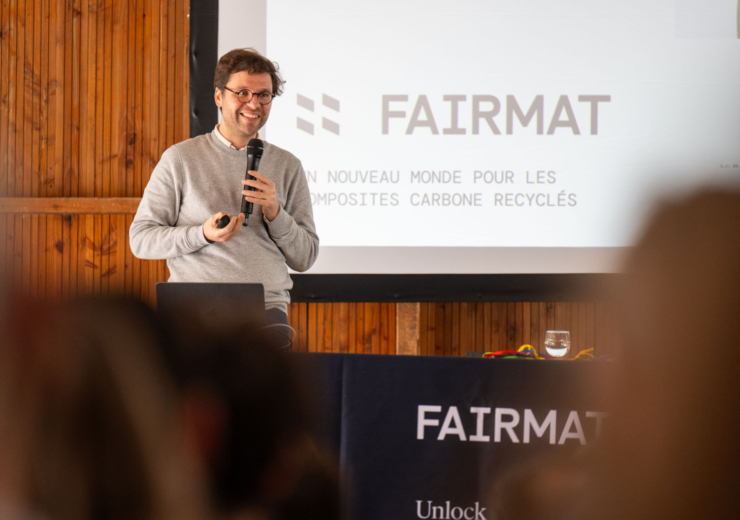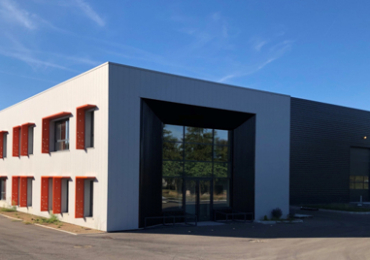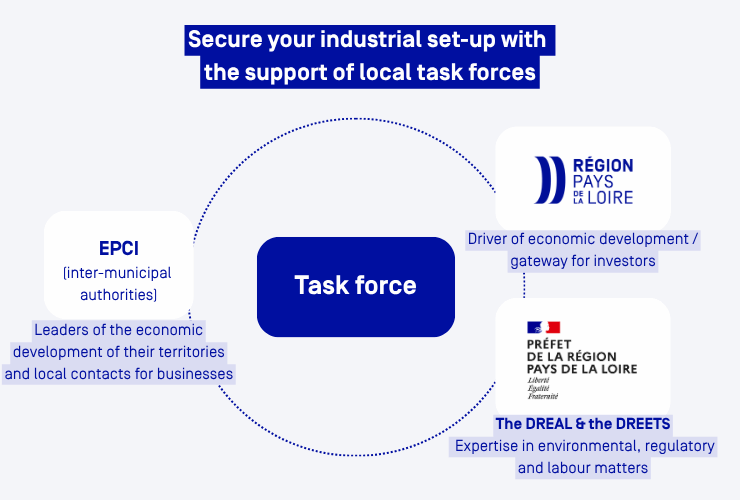Establishing a first plant is a decisive turning point in a company’s development strategy, especially for start-ups and industrial scale-ups. It’s a transformative project that requires a clear understanding of success factors, rigorous planning and effective management of available resources.
This article is based on the experience of Amaury Barberot, CEO of Expliseat, who established his first plant in Atlantic France. We provide essential insights and practical advice to help you successfully launch your industrial project. From site selection, commissioning, and construction planning, to regulatory compliance and production optimisation, every stage is critical.
Discover the key elements you need to build an efficient, sustainable plant that meets today’s challenges.
Setting up a factory: everything you need to know before you begin
Before launching your first factory, you need to ask yourself the right questions. Defining a clear industrial vision enables you to develop a strategy that will guide the entire project, from initial design to production start-up. This upstream reflection helps avoid costly mistakes and mid-course corrections, ensuring that your industrial facilities align seamlessly with your company’s long-term goals.
First plant: construction, takeover, pooling… what’s the best way to succeed?
Before even thinking about concrete, steel and cranes, a central question must be asked: should a plant be built from scratch, or should it be based on existing solutions?
Building a tailor-made factory
Building your own factory gives you the freedom to design a production facility perfectly aligned with your company’s needs: space layout, choice of materials, compliance with new standards, advanced technologies, flow control, anticipation of planned extensions, etc. It’s also a strong signal in terms of image 4.0 and re-industrialisation. However, timelines are long (18 to 36 months on average*), costs are higher and the mobilisation of capital may seem more significant.
*Source: L’Usine Nouvelle
Taking over an existing building
Transforming a former industrial site offers tangible benefits: lower financial investment, pre-serviced land and facilities that can sometimes be reused almost as they are. It also supports a virtuous urban recycling process and aligns with ZAN’s environmental policy of zero net land artificialisation.
In addition to his deep-rooted environmental convictions, for Amaury Barberot, CEO of Expliseat, who made this choice for his first plant in the Atlantic France region, it is also a considerable time-saver: “We’ve saved almost two years compared to a new build, between the studies, planning permissions, identification of the land, and construction itself… The downside is adapting to the existing site”. The choice of building and its technical constraints must therefore be considered. “We opted for a large, simple hall, which can be modularised as the plant grows, with no walls to knock down or ducts to bypass”. Finally, investing in a new, high-quality site also enhances appeal for customers and employees: “It’s a real plus in terms of image and an argument for attracting top talent.”
However, repurposing an existing building can also have a number of disadvantages, linked to technical constraints and costly upgrades.
Renting or producing on a third party’s premises
Renting a building allows you to start production quickly, without having to invest too much of your own money. Partnering with an industrial partner and producing on a third party’s premises also allows you to test the model, adjust volumes to demand, and concentrate on your core business (R&D or business development). This solution is ideal in the early years of a company, but may limit control over production flows and margins.
Pooling resources via an industrial platform
Shared industrial platforms give start-ups and innovative companies access to advanced shared infrastructure (technological equipment, laboratories, test areas, etc.), technical support and simplified administration processes.
Good to know: in Atlantic France, regional platforms, such as Technocampus, Atlanpole Biothérapies, Neopolia, and IRT Jules Verne offer this type of service.
Designing your factory: thinking about flow, people and the environment
Designing a factory involves much more than just erecting walls and installing machines. It’s about envisioning a place where organisation, technological innovation, and team collaboration coexist.
Optimising production flows
When we imagine a factory, we often think of machines and products. Yet one of the most crucial factors in ensuring smooth operations is ‘flow’: in other words, the way in which raw materials, parts and people move around the facility. The layout of the factory must be designed to ensure fluidity. This begins with a detailed analysis of the paths taken by raw materials, components, semi-finished, and finished products. It’s essential to avoid crossing paths, backtracking, bottlenecks, etc.
Digital tools, using simulation or digital twin software, can be used to test different layout scenarios before finalising the design.
Integrating new ways of working
The modern factory is no longer just a production space: it’s a dynamic environment. It may include collaborative areas for R&D and production teams, prototyping zones, training rooms and testing laboratories. Take Expliseat’s new factory in Atlantic France, for example. From the outset it was designed to combine advanced technology with user comfort. The factory of the future will place people and innovation at its core.
Factory 4.0 must also adapt to new ways of working: open industrial work spaces, quiet zones, and shared digital tools. Encouraging the flow of information and ideas is just as important as encouraging the flow of materials. At Expliseat, two production lines have been installed, combining robotisation and cutting-edge digital tools, such as 3D scanners for quality control and automated systems to guarantee optimum geometric precision, within an environment where ergonomics have been designed to improve operator comfort.
In this context, quality of life at work becomes a real driver of both attractiveness and performance. Natural light, acoustic comfort, safety, ergonomic workstations and access to transportation and services are all key differentiators.
Taking environmental impact into account
Integrating environmental concerns is no longer optional. It is a criterion of social acceptability, a regulatory requirement, and a commercial advantage.
Right from the design stage, we must consider:
- Reducing energy consumption (insulation, LED lighting, heat recovery, etc.)
- Controlling water usage
- Implementing short waste management cycles or adopting a circular economy approach
- Use of bio-sourced or recyclable materials in construction
An exemplary facility can become a strong asset for brand image and an attractive factor for customers, employees and both public and private partners.
Managing the creation of the plant and anticipating operations
Anticipate operations during the construction phase
Designing the plant, building the walls and fitting out the spaces are not enough. Operational planning should start from the beginning, including:
- Recruiting operators and managers
- Preparing team training (procedures, safety, maintenance)
- Organising internal logistics
- Digitising processes and implementing industrial supervision and management tools (such as ERP and MES software)
For Amaury Barberot, this foresight was essential to the success of the project. Right from the start, a ‘small production line’ was set up to launch the initial production runs, even with low output and limited efficiency. This allowed the team to identify real challenges in the field before installing a more efficient line. “Thanks to this intermediate phase, we learned a lot from this small production line. We were able to debug certain malfunctions before moving on to much larger and more complex industrial equipment”.
The human aspect is also crucial. “When a company has never produced anything in-house, it is necessary to create around fifteen different jobs with a wide range of skills as the plant is being established: a logistics manager, a health-safety-environment manager, a methods manager, and more”. This is why Expliseat hired an experienced site manager very early on, capable of overseeing the various phases of the project and managing both development and production. “Every month that goes by without production on the site means money spent (on rent, HR, etc.)”, Barberot points out. The challenge is therefore to recruit, onboard and develop the skills of the teams.
Anticipating operations means saving precious time at the launch, ensuring a smooth start-up phase, and optimising the industrial ramp-up.
Your first factory in the Atlantic France region: our support
Discover the Impact Program- a dedicated initiative to help you set up your first factory:
- Assistance in finding a suitable building or plot of land
- Administrative and financial support
- Accelerated integration into our networks
- Recruitment assistance
Need to industrialise your business and continue growing?
3 tips from Amaury Barberot, CEO of Expliseat
1. Re-use high-quality industrial buildings
Choosing an existing, well-designed and still-functional site not only reduces the costs and time involved in construction, but also supports an environmentally responsible approach. It can also help attract future employees: a pleasant, valued and immediately operational workplace is a strong asset when recruiting talent.
2. Organise production over four days to free up time for progress
By concentrating work into four days (Monday to Thursday), we can meet operators’ expectations while reserving the fifth day for plant management. This slot is then dedicated to strategic tasks, such as maintenance, training, continuous improvement, or planning future projects. It’s a balanced model that boosts efficiency without neglecting the development of the plant.
3. Take time to structure processes from the start
A common pitfall is underestimating the time required to build the plant’s internal organisation. In addition to recruitment, you must lay the operational foundations: fire safety procedures, logistics for receiving parts, machine maintenance, stock management, workplace safety, etc. This initial structuring phase is crucial to prevent malfunctions as soon as the plant is up and running.


 日本語
日本語  Français
Français 



